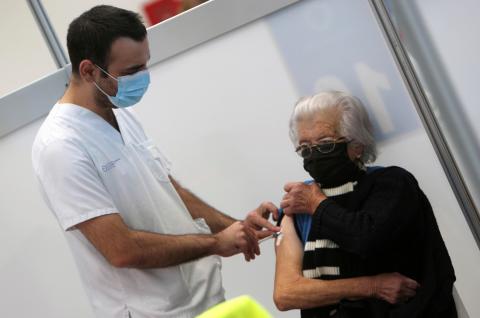Those affected by salmonellosis due to consumption of chocolate eggs are mostly children under 10 years of age. The symptoms of salmonellosis are usually mild, although young children and the elderly are more at risk of dehydration. In this outbreak the severity could be somewhat higher than usual. A recall of contaminated products was ordered on 8 April.
What is salmonellosis?
As explained by the Spanish Food Safety Agency (AESAN), salmonellosis is one of the most common food-borne diseases, caused by bacteria of the genus Salmonella. Symptoms are usually mild. "It is generally characterised by the sudden onset of fever, abdominal pain, diarrhoea, nausea, vomiting, headache, myalgia and other systemic symptoms," says AESAN.
In Spain it is a notifiable disease.
How did the outbreak start?
On 27 March, the UK reported an outbreak of 18 cases of salmonellosis to the WHO. Epidemiological and molecular investigations attributed it to the consumption of contaminated Ferrero brand chocolate, produced in Belgium, which had been exported to at least 113 countries. Specifically, the causative bacteria are monophasic Salmonella Typhimurium resistant to several groups of antibiotics. They were detected in a whey tank at Ferrero's plant in Arlon, Belgium.
What is the current situation?
The Spanish Centre for the Coordination of Alerts and Health Emergencies (CCAES) reports the identification of "two different strains related to this alert", defining two possible clusters of cases in eleven countries: Austria, Belgium, Denmark, Spain, France, Germany, Ireland, Luxembourg, the Netherlands, Norway and Sweden and the United Kingdom. WHO has confirmed 151 cases.
According to the CCAES on 25 April, two cases linked to one of these clusters had been confirmed in Spain, and two other probable cases associated with the other cluster were under investigation. Both are in children under 10 years of age.
Have the contaminated products already been recalled?
On 6 April AESAN reported the recall of a number of the company's products, and on 8 April extended the alert to "all batches of Kinder products manufactured in the facilities located in the Arlon factory plant in Belgium".
Serious cases?
The European Centre for Disease Prevention and Control (ECDC) says the outbreak "is characterised by an unusually high proportion of hospitalised children, some with severe clinical symptoms, such as bloody diarrhoea".
As of 25 April, the WHO has information on only 21 cases and of these, 41% have required hospitalisation (none have died). This is an "unusually high" proportion, but the agency says it needs more data to make a judgement on the severity of this outbreak.
What are the usual symptoms of salmonellosis?
Symptoms of salmonellosis are usually mild. They appear 6 to 72 hours after eating contaminated food and last 2 to 7 days. Patients usually recover without specific treatment. However, in some cases, especially in young children and the elderly, the dehydration caused by the disease can be severe.
Paediatrician Ángel Hernández Merino, from the Spanish Association of Primary Care Paediatrics (AEPap), explains to SMC Spain that Salmonella Typhimurium causes gastroenteritis usually limited to the intestinal tract and mild, "not very different from gastroenteritis caused by other agents". Viral gastroenteritis in particular is very common in children and only "in very young children, with severe cognitive deficits or with severe chronic diseases, there may be some difficulty in managing these symptoms without other measures than general care," says Hernández Merino.
How to distinguish salmonellosis gastroenteritis?
The presence of blood in the stool is a symptom of salmonellosis, says Ángel Hernández Merino.
Is it relevant for treatment if the strains are resistant to antibiotics?
"Most salmonella gastroenteritis does not require the use of antibiotics," explains Hernández Merino. "At most we have to monitor fluid loss due to diarrhoea and vomiting, and treat dehydration, if anything. Antibiotics are only used in the case of a very young infant or immunosuppressed children. There are several possible antibiotics.
Can we expect more cases?
The WHO believes it is likely that additional cases will be reported given the wide distribution of the products. The risk of the event spreading to more countries in Europe and the rest of the world is "moderate until information on the full recall of the implicated products is available," says the WHO.
What is recommended to consumers:
European and Spanish health authorities "are preparing a risk assessment for Spain that will be published in the coming days," says the CCAES. For its part, the AESAN recommends returning affected products to the point of purchase if they are at home. Those who have consumed them "and present gastrointestinal symptoms such as vomiting, diarrhoea, nausea, fever or abdominal pain" should go to their health centre.
More information on salmonellosis from AESAN.



